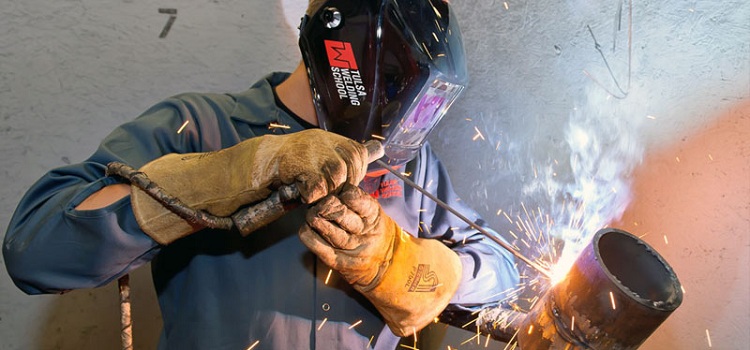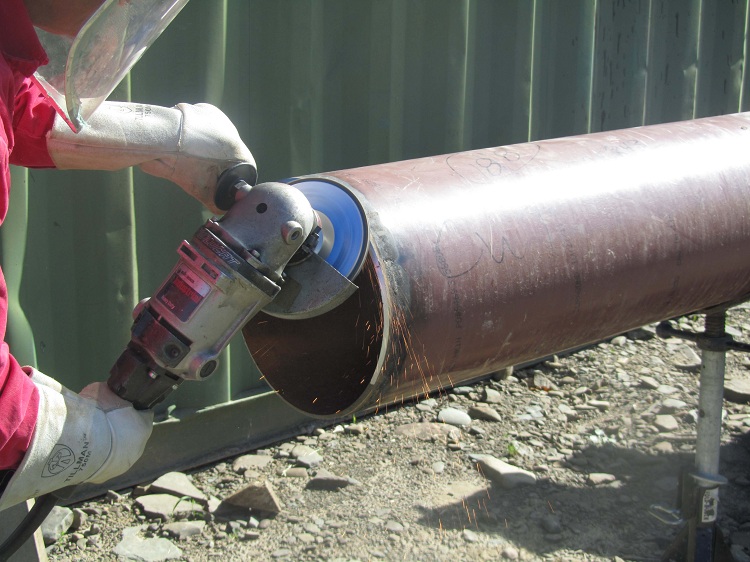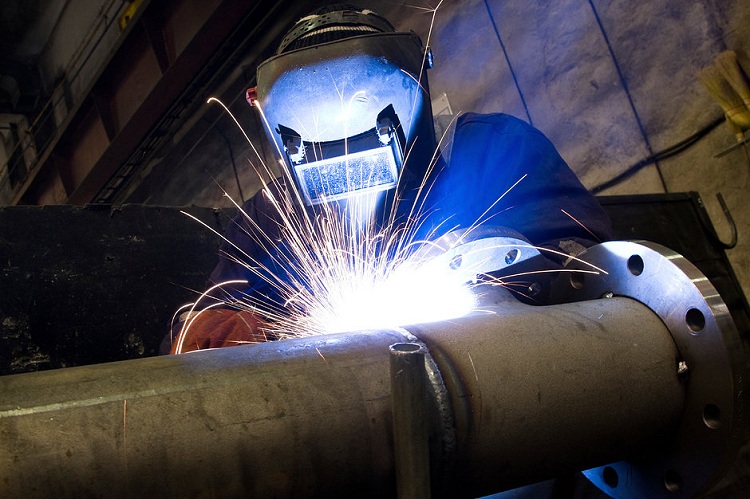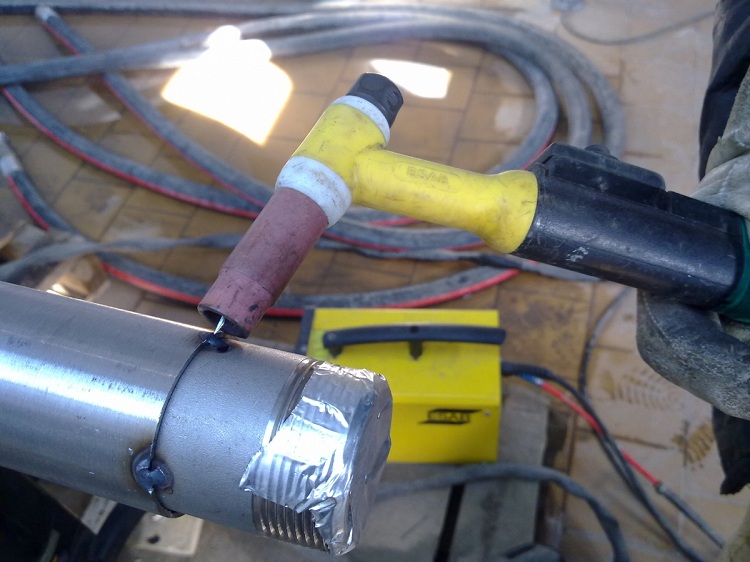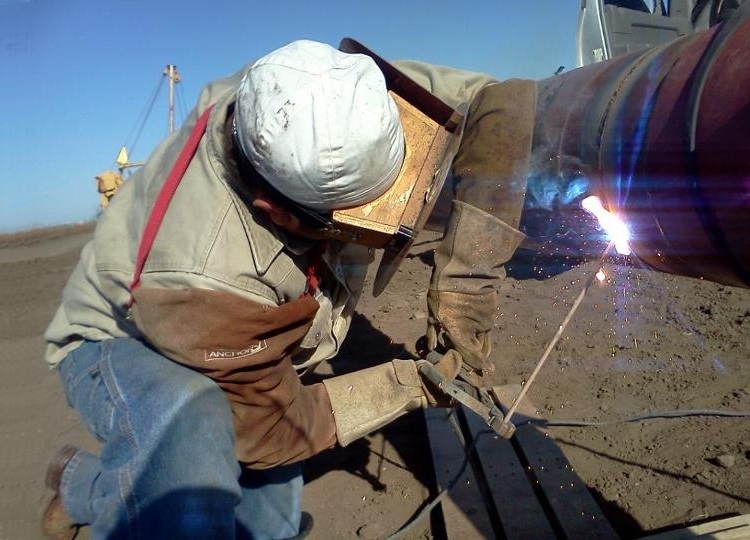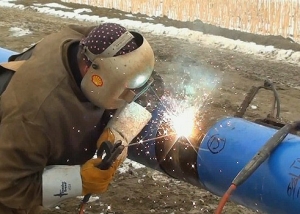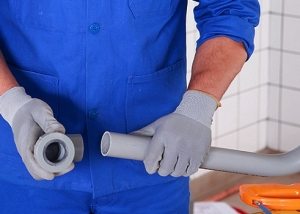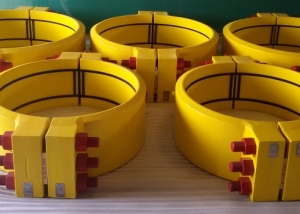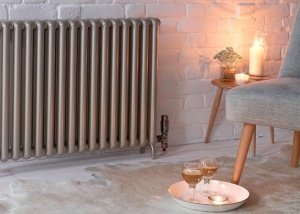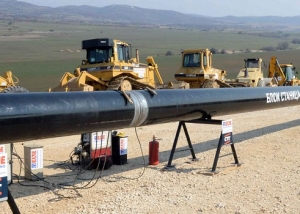Welding is the most reliable method of joining metal pipes of all that are currently known. A neat seam from the welding machine guarantees a one-piece pipeline with branches from several segments. The welder is different for the welder, and this experience has been gained all his life. Minimum weld influx, accurate and durable connection, tightness are the basis for good welding. And in this matter one cannot do without the knowledge and technology on which practical experience is built.
Content
What is important to know about metal pipe welding
The welding of ferrous metal pipes is used for the installation of plumbing and heating communications and remains one of the most sought-after jobs in the construction services market. It is used:
- in everyday life - for the installation of heating, water supply and sewage;
- when laying trunk pipelines;
- for the manufacture of most metal products;
- in the construction of building structures of frame type.
Technologically, welding of metal pipes differs from soldering a polymer pipeline or connecting copper pipes, which is subject only to professionals. Workpieces are welded using different apparatuses:
- for welding with a gas torch;
- for electric arc welding;
- MIG-MAG or TIG.
Welding machines differ in size, principle of operation and method of supply.
For successful operation, you need a reliable modern apparatus and electrodes. Do not do without an understanding of this process and work experience. Protective clothing and an open, well-ventilated place with a platform where scale can fall are needed. When choosing the apparatus and operating mode, the dimensions and shape of the pipes are taken into account, for example, welding of a square pipe has its own specifics. The wall thickness of the metal sections and pipes and the cut quality are also taken into account.
Edges require mandatory cleaning from dirt, old paint and rusty deposits. This is always done before you cook the profile pipe (and another type of pipe), it is important to prepare the joints. Next, the chamfer is removed so that the V-shaped seam is filled with molten metal. Such a connection should be:
- durable;
- reliable;
- tight;
- aesthetic.
Usually one unhurried passage of the welder along the seam is sufficient. High-quality work also provides a seam with a slight overlap, and not butt welding.
Note! The connection of pipes thicker than 4 mm requires other approaches, so that there is no overheating of the joint and loss of joint strength.
Pipe welding methods used in construction
Welding is used for strong and integral joining of metal and polymer products. This method is classified by the type of weld seam - under pressure or heat treatment:
- cold
- chemical adhesion;
- ultrasound;
- compound under friction or contact;
- gas press and press.
To perform such diverse inherently methods use:
- hand tool;
- industrial equipment;
- welders;
- polymer soldering tools;
- chemical components;
- the press.
It is interesting! The cold press joint is suitable for working with pipes and profiles made of non-ferrous metals. They are more ductile and ductile than steel products. For copper, aluminum and bronze, a different bonding principle is used. One of the methods is the deformation of end sections under pressure using a press.
Gas and electric arc welding of steel pipes requires certain conditions, special equipment, an inert environment or the use of flux. To join the pipeline, the most widespread method is the melting of sections with preliminary processing of the edge.
Brief description of gas welding technology
- The principle of operation is the rapid heating of the end sections (edges) of the connected square or round pipes by means of a gas-oxygen flame. Next, the gap between the prepared edges from the heated rod is filled with molten metal. The strength and properties of the weld obtained are lower than when joined during operation by electric arc welding.
This type of welding is preferred when joining metal pipes of small thickness. There are situations when only this method is available or there is no other equipment. Gas welding is recommended when installing a pipeline of metal with walls no more than 3.5 mm. But the most common is electric arc welding and the mechanical connection of pipes through a semiautomatic device.
Materials and equipment for gas welding:
- welding machine;
- oxygen cylinder (maintaining the combustion process at high temperature);
- acetylene or another gas with similar characteristics (propane, methane, kerosene vapors);
- welding rod (wire for filling the seam with plastic metal);
- fluxes in the form of a powder or paste (to reduce the formation of metal oxides, from heating rises up and forms a film.
- Flux - a prerequisite for cooking copper, cast iron and alloy steel. For carbon steel, this is not necessary. The composition is selected for the parameters of the metal being welded.
- The electrodes must match the thickness of the products. To join the steel pipeline with the walls of small diameter, experts recommend the use of electrodes of 3-4 mm - the most common.
- Edge preparation involves any welding process for metal pipes. The sequence of actions is the cleaning of end surfaces and edge processing. For thin-walled pipes up to 3.5 mm, it is not necessary to make edges, and for a large thickness of products, beveled edges are needed, since complete heating is complicated.
- The seams are made from left to right or in the reverse order, while the flame works in the welded section of the seam, the filler rod is displaced behind the burner. This increases welding efficiency and reduces gas consumption, even with pipe wall thicknesses exceeding 5 mm. In left-side welding, they work from right to left, the filler rod is displaced in front of the torch. This method gives a more aesthetic seam, therefore it is used for welding square and thin-walled pipes.
- It is necessary to prepare the edges and get chamfers before starting the joint of the pipeline. After the preparation of the ends, the segments are centered between each other and grasped pointwise at 3-4 points around the circumference (the corners of a square pipe). The “tack” spike should not be too noticeable without rising high above the ends.
- After checking the horizontal of the pipes to be connected and adjusting the alignment, the weld is “welded”. For the first stage, it is better to use smaller electrodes, of the order of 3 mm. The chamfer should not be filled with molten metal to the full depth, to half or 2/3 of the volume. At the second passage, there is an adjustment with a large electrode (4 mm).
Important! By the end of gas welding there should be no undigested sections, excessive influxes, scale with slag and other defects. High-quality continuous seam speaks of successfully completed work. In pipes of large diameter, the presence of internal weld voids can only be detected with a special flaw detector.
Arc welding technology
Mastering electric arc welding skills is a little more difficult due to the variability of current. The method of joining the ends of the pipes occurs under the influence of an electric discharge forming a high-temperature arc. The quality of the joints in arc welding of pipes depends on many factors, including the organization of work, the thickness of the products and the grade of steel. The parameters of the electric current, its polarity and the length of the arc also affect. The pipe temperature at the time of welding and the amplitude of the electrodes are less important. An increase in current accelerates the welding of metal pipes.
In arc welding, to improve the quality of the weld, one has to deal with rotary joints (with rotation of the segments around its axis). But this is not always possible, therefore, fixed and ceiling joints are combined in communications. A feature of the fixed joint is the need to pass the seam 2-3 times:
- root layer;
- filling;
- facing.
Attention! If it is necessary to perform complex fixed joints, large-diameter pipes should work smoothly 2-3 welders with devices of similar parameters. This ensures weld quality and shortens work time.
Variable characteristics of electricity can work to the benefit of the welding process. Reverse polarity and a decrease in force give high-quality edge heating and metal melting. The preparation of metal pipes for welding is practically the same - edge cleaning and chamfering. Further, the technology involves the main stages:
- fixing the articulated pipes on the welding rack;
- screed and centering of the ends to obtain sufficient clearance for welding;
- spot tack welding;
- obtaining a continuous uniform seam.
Fixed joints are welded in three ways:
- manual (the most time-consuming);
- semi-automatic;
- automatic.
For the laying of communications, industrial devices are used that monitor the process in automatic mode. To do this, there is a control panel and a welding head on a self-propelled moving module. At the same time, the welding head during operation moves along the circumference of metal products that have undergone preliminary alignment, boiling the ends of the electrode.
Basic classification of seams
Seams are continuous and intermittent. Today, there are 32 known methods for obtaining high-quality joining of pipes from different materials. In practice, 4 varieties of joining surfaces have been worked out:
- "Taurus" (resembles the inverted letter "T").
- "Lap" (the edges overlap each other).
- "Butt" (around a common imaginary axis).
- Angular (at various angles, not necessarily 90 °).
Welding of steel pipes is classified by the location of the products to obtain a high-quality weld:
- horizontal
- vertical
- lower;
- ceiling.
Bottom - the most convenient location of welded parts, when possible, try to provide this position of the pipes for rotary joints. It is desirable that the welder work with the lower position, and the connected pipes are rotated to obtain a uniform weld.
The tightness of the seam without unnecessary influxes and voids that can be detected by the flaw detector, ultimately determines the quality of the work performed. Sometimes a section has to be digested after quality assessment. Remaking is always harder than conscientiously doing.Therefore, students are advised to practice before welding on pipe scraps of a similar format.
